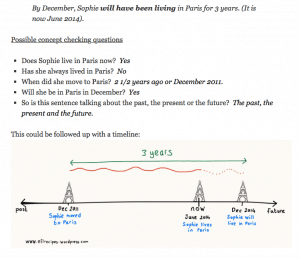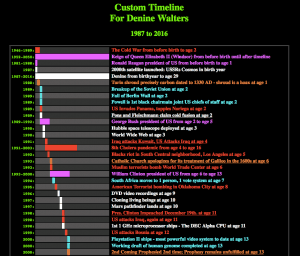A grammar lesson can make students and teachers alike cringe, whether it is in a regular class or during observation by fellow educators. Worst is the latter as you can expect quite a lot of comments. We all have different ways of teaching grammar to English-as-a-Foreign Language (EFL) students, but you do need to teach it effectively (and understand the grammar yourself, too!).
So, how do you teach grammar so that students will understand and also remember what you taught them in future lessons? There are quite a few ways to teach grammar to ESL students in a memorable way. Let’s have a look at some of these.
1. Concept Checking Questions (CCQs)
Concept Checking Questions (CCQs) are something you learn a lot about – and get to practice a lot – when you do a Certificate in Teaching English to Speakers of Other Languages (CELTA). A big no-no is any classroom should be “Do you understand?” or any variant thereof for three simple reasons:
- Students may think they understand and therefore answer “yes;” you won’t know whether they actually do understand and who in the classroom does and does not understand.
- Some (read most) students are too shy to answer “no.”
- It is a lazy way to “check” understanding without actually doing so.
According to Laura Greenwood, a “concept checking question is designed to highlight the essence of meaning of the day’s target language and verbally check for understanding of grammar, vocabulary, communicative functions, [and] instructions; really, for anytime a teacher wants to ask, ‘Do you understand?’” When teachers use CCQs in the classroom, they elicit what the students know and the students also get to participate in the learning process and understanding of what is new language to them.

- Always prepare these in advance (as you should your whole lesson).
- The questions need to be simple and require closed-ended answers (the most common being “yes” and “no”).
- CCQs should never be directed at the whole class or just the top students. Focus on different students each time so that you can get a good idea of who does and doesn’t get the target language.
- New language or vocabulary that students are not familiar with should not be added to the CCQs, and also don’t use the target language in these questions as you want to highlight the meaning of it.
- Make use of things other than just words in the CCQs; utilise images, realia, the white (or smart) board, timelines in tenses, etc. to underline the meaning of the target language.
2. Break your grammar lesson into chunks
Just like you would plan a presentation, practice, and production (PPP) ESL lesson, so should you break up the grammar that you need to teach. You need to introduce and explain the grammar. Also, show how it can be used (context is key here), then give the students an activity or two to practice the target language. You could also do another “freer” activity, usually in the form of a game or role play, that further promotes learning and practice.
One of the key things with teaching grammar is preparation beforehand. Winging it works to some extent, but you have to understand what you are teaching and also prepare relevant examples. You don’t want to come up with an example in class to only realise that that particular sentence has exceptions; while it is not a bad idea to demonstrate those exceptions, you don’t want to overcomplicate the lesson (and even less so when the students are at the beginner or elementary level). Rather choose examples that clearly reinforce the target language, and if there is time at the end of the lesson, then briefly talk about the exceptions and save it for the next lesson (or review lesson).
Here are steps to follow to break up the grammar into manageable pieces:
- Use the white (or smart) board to write down the target language, i.e. the grammar rule.
- Explain the grammar and point out why and when we use it.
- Use contextual oral and written examples that will target both auditory and visual learning styles.
- Ask the students to give you some additional examples.
- Point out the exceptions to the grammar rule if applicable.
3. Making grammar interesting and relevant

Here is a snapshot of my personalised timeline.
Another way to teach grammar effectively is to make it interesting and relevant to the students. Claudia Pesce has a great suggestion on how to teach the past perfect tense. It is one of those tenses that aren’t used a lot (most native English speakers don’t even use it) and you might wonder why you need to teach it to your ESL students. While we may not use the past perfect tense so often, it is necessary to teach it to our students because it will help them to become more fluent and take their English to a higher level.
A novel way to teach the past perfect tense would be to visit https://www.ourtimelines.com/. Here a customised timeline is created. You can enter your name and your birth year and see what major historical events happened throughout your lifetime.
For example, I was born in 1987, and you can see that the breakup of the Soviet Union happened when I was 2 in 1989. So, setting up the past perfect tense can be something like: “Annie, the break-up of the Soviet Union occurred in 1989. I was born in 1987. You were born in 2004. As such, when you were born, the Soviet Union has been broken up for 25 years. When I was born, it hadn’t broken up yet.
Here you can give a few examples, talked about the form of the past perfect tense, and ensure that the students get that this tense is used to talk about two events that happened in the past, but that one happened before the other. The students can also use their own timelines (or a generic one) to practice this tense with their classmates.
Conclusion
These are just a few ideas to keep in mind to teach grammar effectively. There are, of course, many other ways to do so, and some will work better than others. It matters that you prepare for the class ahead of time with examples that clearly demonstrate the grammar point and that are relevant to the theme (or show the students when we use that specific tense, for example). More than that, try to make grammar fun for the students; talk briefly about the rules and exceptions and let the ESL students spend most of the time practising.
About the Author
Denine is currently a freelance writer, editor/proofreader and ESL teacher. Previously, she taught online English lessons to students from all around the world and, before that, she lived and taught English to young learners in Taiwan. In her free time, she likes to read, do scrapbooking and grammar quizzes, and travel. For her educational background, she has an MA in Politics, with a dissertation written on post-conflict peacebuilding, a BA Journalism degree, a TEFL and CELTA certificate, and also a few certificates in various other short courses.

We're hiring!
With schools around the world, Shane English School always has exciting new opportunities to offer.


